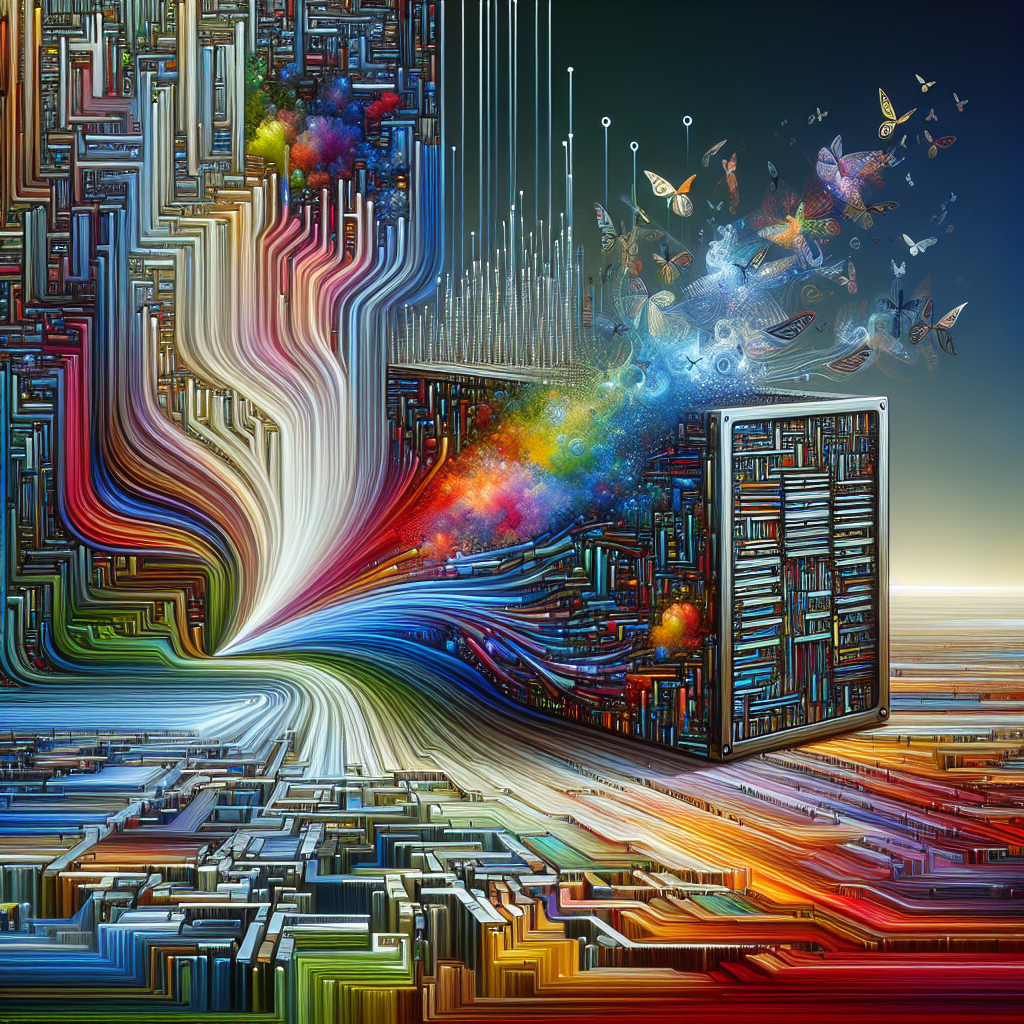Artificial intelligence (AI) has been making waves in various industries, transforming the way businesses operate and changing the landscape of technology. One of the most fascinating areas where AI is making a significant impact is in the creative industries. From music composition to graphic design, AI is revolutionizing the way we create and consume art.
Algorithms are the backbone of AI, serving as the driving force behind the technology’s ability to analyze data, learn patterns, and make decisions. In the creative industries, algorithms are being used to automate tasks, generate content, and even assist in the creative process. This fusion of technology and art has led to exciting new possibilities and innovations in fields such as music, film, visual arts, and more.
One of the most notable areas where AI is transforming the creative industries is in music composition. AI algorithms can analyze vast amounts of music data and learn patterns to create original compositions. Companies like Amper Music and AIVA are using AI to compose music for films, video games, and commercials, providing composers with a powerful tool to enhance their creativity and productivity. AI-generated music has also found its way into the mainstream, with songs like “Daddy’s Car” by Flow Machines and “Break Free” by Taryn Southern becoming hits.
In the film industry, AI is being used to streamline the production process and enhance visual effects. Companies like Zoic Studios are using AI to create realistic digital characters and environments, reducing the time and resources required for post-production. AI algorithms can also analyze audience data to predict box office performance and optimize marketing strategies, helping filmmakers reach their target audience more effectively.
Visual arts are also benefiting from AI technology, with algorithms being used to create stunning digital artworks and enhance traditional art forms. Artists like Mario Klingemann and Refik Anadol are using AI to generate new forms of art, pushing the boundaries of creativity and challenging traditional notions of artistry. AI-generated art has gained recognition in the art world, with pieces like “Portrait of Edmond de Belamy” by Obvious selling for over $400,000 at auction.
AI is not only transforming the way art is created but also how it is consumed. Streaming platforms like Spotify and Netflix are using AI algorithms to recommend personalized content to users, based on their preferences and behavior. This personalized approach to content delivery has revolutionized the way we discover new artists, films, and genres, making it easier for consumers to find content that resonates with them.
Despite the many benefits of AI in the creative industries, there are also concerns about the impact of technology on human creativity and jobs. Some argue that AI could replace human artists and diminish the value of originality in art. However, proponents of AI in the arts believe that technology can enhance creativity, inspire new forms of expression, and democratize access to artistic tools and resources.
In conclusion, AI is transforming the creative industries in exciting and innovative ways, from music composition to visual arts. By harnessing the power of algorithms, artists and creators can push the boundaries of creativity, reach new audiences, and explore new artistic possibilities. While there are challenges and concerns surrounding the integration of AI in the arts, the potential for growth and innovation is vast. As technology continues to evolve, the creative industries will undoubtedly continue to be reshaped by the transformative power of AI.
—
FAQs:
Q: Will AI replace human artists in the creative industries?
A: While AI technology is capable of creating art, it is unlikely to replace human artists entirely. AI can assist artists in the creative process and provide new tools for expression, but human creativity and emotion are essential elements of art that cannot be replicated by machines.
Q: How can artists benefit from using AI in their work?
A: AI can help artists streamline their workflow, generate new ideas, and reach a wider audience. By leveraging AI technology, artists can explore new creative possibilities, collaborate with AI systems, and enhance their artistic practice.
Q: What are some examples of AI in the creative industries?
A: Some examples of AI in the creative industries include music composition algorithms, AI-generated visual art, personalized content recommendations on streaming platforms, and digital character creation in films. These applications of AI are changing the way art is created, consumed, and distributed.
Q: What are the ethical considerations of using AI in the arts?
A: Ethical considerations of using AI in the arts include issues of copyright, ownership, and attribution of AI-generated artworks. There are also concerns about the impact of AI on human creativity, the value of originality in art, and the potential displacement of human artists in the industry. It is essential for artists, technologists, and policymakers to address these ethical challenges and ensure that AI is used responsibly and ethically in the creative industries.

